Passionfruit vines are one of the most rewarding plants you can grow if you’re looking for a stunning, fast-growing climber that produces delicious, aromatic fruits. Known for their glossy foliage, beautiful purple or white flowers, and sweet-tart fruits packed with pulp and seeds, passionfruit vines thrive in warm climates and grow particularly well when trained on a trellis.
If you’re eager to enjoy homegrown passionfruit while adding a lush vertical feature to your garden, this detailed guide will walk you through everything you need to know — from choosing the right variety to planting, trellising, and harvesting.
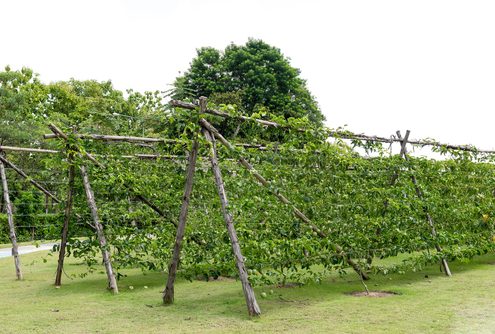
Why Grow Passionfruit on a Trellis?
Passionfruit vines are vigorous climbers with tendrils that naturally seek out vertical structures. A trellis provides support, encourages healthy air circulation, and makes harvesting easier. Plus, a trellis transforms the vine into a beautiful green curtain filled with exotic flowers and hanging fruits — a garden showpiece and edible harvest all in one.
Benefits of using a trellis:
- Keeps fruits off the ground and away from pests.
- Prevents tangled vines and overcrowding.
- Allows better sun exposure for foliage and fruits.
- Enhances airflow, reducing disease risks.
- Makes maintenance and harvesting much easier.
- Adds privacy, shade, or a decorative element to your outdoor space.
Choosing the Right Passionfruit Variety
Before you start, pick a variety suited to your climate and taste preferences. The two most popular types are:
1. Purple Passionfruit (Passiflora edulis)
- Flavor: Sweet and aromatic
- Fruit size: Small to medium (egg-sized)
- Climate: Thrives in subtropical and mild temperate areas
- Cold hardiness: Can tolerate light frost
2. Yellow Passionfruit (Passiflora edulis f. flavicarpa)
- Flavor: Slightly more tart but still aromatic
- Fruit size: Larger than purple types
- Climate: Prefers tropical and warmer subtropical zones
- Cold hardiness: Less tolerant of frost
For southern states like Florida, Texas, and California, both varieties can do well, depending on local microclimates.
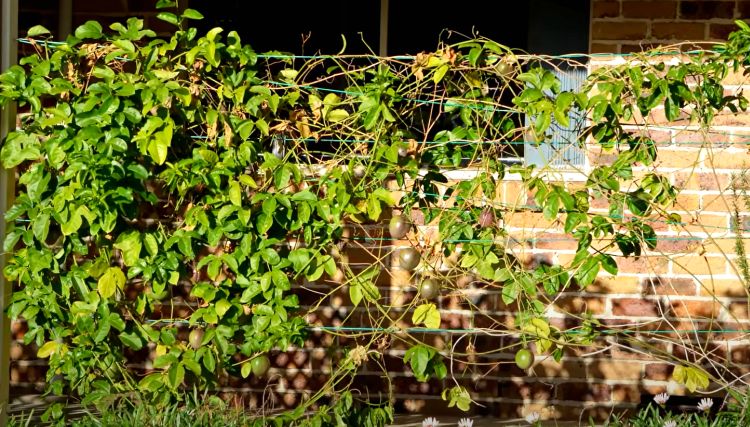
How to Plant Passionfruit on a Trellis
1. Site Selection
Choose a sunny location that receives at least 6-8 hours of direct sunlight daily. Passionfruit vines thrive in warmth and require well-draining soil.
Ideal spot: Along fences, garden walls, or purpose-built trellises where vines can climb and spread.
2. Soil Preparation
- Soil type: Loamy, sandy soil with good drainage
- pH level: Slightly acidic to neutral (5.5 to 7.0)
- Work in organic compost or aged manure before planting to improve fertility.
3. Building the Trellis
Passionfruit vines are heavy and fast-growing, so build a sturdy trellis capable of supporting their weight and sprawling habit.
Trellis ideas:
- Horizontal wire supports attached to posts
- Arched trellises
- Pergolas or overhead frames
- Chain-link fences or lattice panels
Use galvanized wire or garden twine for additional support strands every 12-18 inches vertically.
4. Planting the Vine
- Plant in spring or early summer after the danger of frost has passed.
- Dig a hole twice the width and depth of the root ball.
- Gently loosen roots and place the plant in the hole.
- Backfill with soil mixed with compost and water deeply.
- Space multiple plants 8-10 feet apart to prevent overcrowding.
Training and Supporting the Vine
As the vine grows, guide its tendrils toward the trellis using soft ties or string. Pinch off lateral growth near the base to encourage upward growth initially.
Tips for training passionfruit vines:
- Regularly check that new shoots are directed along the trellis.
- Prune lower branches to create a clear trunk and reduce pests.
- Encourage a fan shape or espalier pattern for even coverage and easier harvesting.
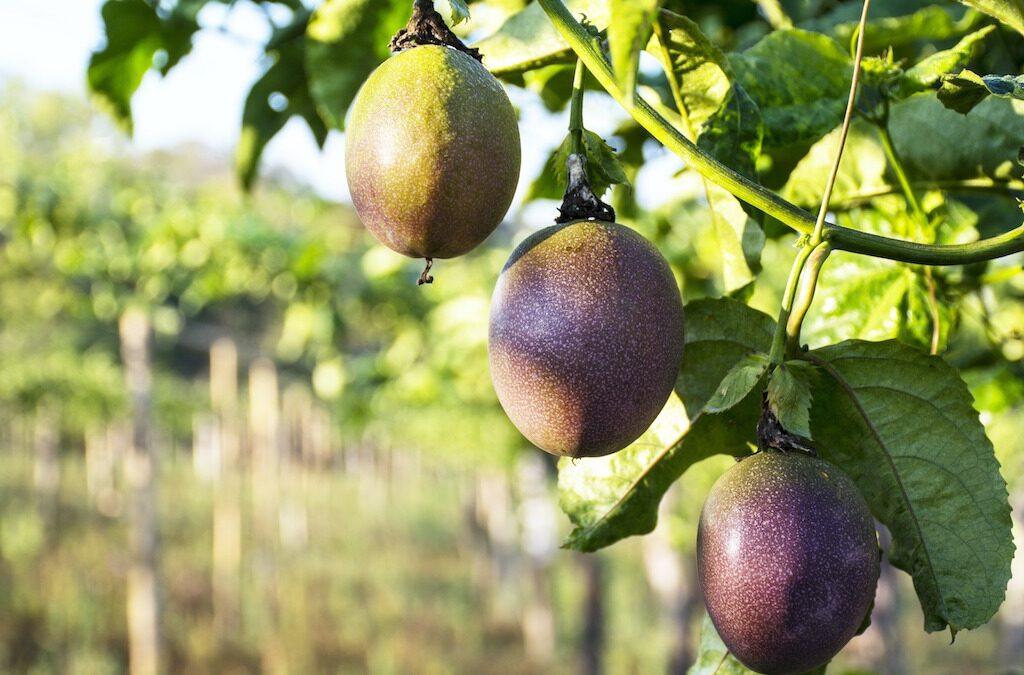
Caring for Your Passionfruit Vine
1. Watering
Passionfruit vines require consistent moisture, especially during flowering and fruiting:
- Water deeply once or twice a week, depending on rainfall.
- Avoid waterlogging, which can cause root rot.
2. Fertilizing
- Apply a balanced organic fertilizer (10-10-10) every 4-6 weeks during the growing season.
- Avoid excessive nitrogen as it encourages foliage growth at the expense of flowers and fruit.
- Top-dress with compost in spring for extra nutrients.
3. Pruning
Regular pruning improves airflow, promotes new growth, and encourages fruit production.
- Remove dead, weak, or overcrowded stems in late winter or early spring.
- After the first year, cut back old wood to stimulate fresh shoots.
- Thin out overgrown areas to maintain access to fruits and prevent disease.
Common Pests and Problems
While passionfruit vines are relatively hardy, keep an eye out for these issues:
- Aphids and scale insects: Spray with insecticidal soap or neem oil.
- Fruit fly (in tropical areas): Use exclusion bags or traps.
- Root rot: Avoid overwatering and improve drainage.
- Brown spot disease: Remove affected leaves and apply fungicide if needed.
Healthy, well-maintained vines on a trellis are less prone to problems due to improved air circulation and sun exposure.
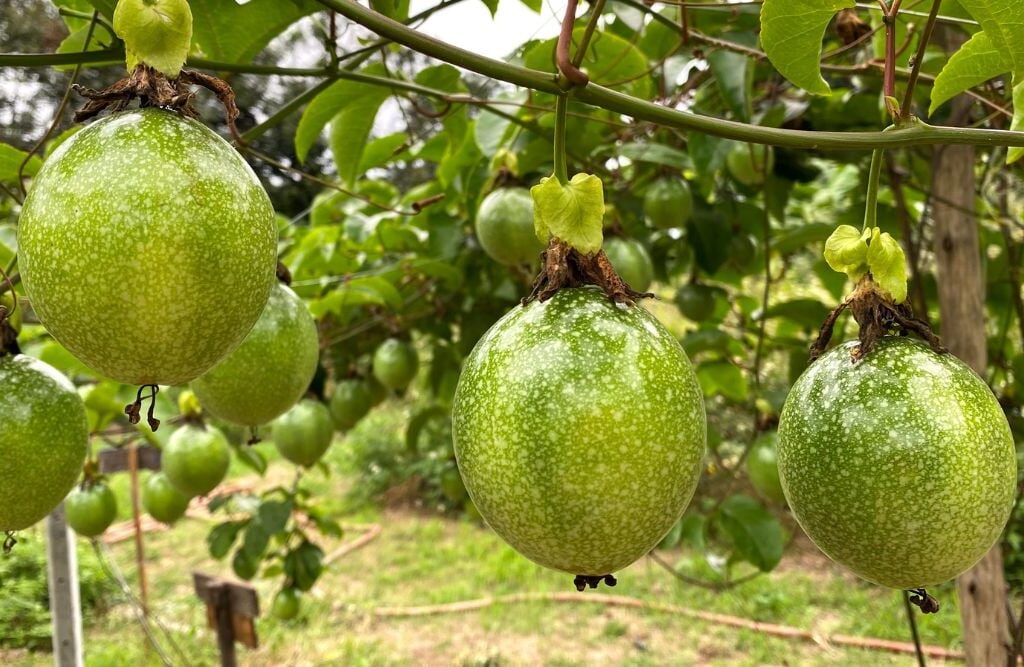
Pollination and Fruiting
Most purple passionfruit varieties are self-pollinating, but cross-pollination by bees improves fruit set. Yellow types often need cross-pollination from another plant.
To encourage pollinators:
- Plant bee-friendly flowers nearby.
- Avoid using pesticides during flowering.
Fruit Maturity: Passionfruits ripen about 70-80 days after flowering. They naturally drop when fully ripe or can be handpicked when skin starts to wrinkle.
Harvesting Passionfruit
- Gently twist or snip fruits when they turn dark purple or yellow and feel slightly heavy.
- Store at room temperature until slightly wrinkled for best flavor.
- Fruits last 2-3 weeks in the fridge or can be frozen for longer storage.
Enjoy the pulp fresh, in smoothies, desserts, syrups, or cocktails.

Propagating Passionfruit Vines
You can grow new vines from:
- Seeds: Clean and dry seeds from ripe fruit. Plant in seed trays and transplant once established.
- Cuttings: Take 6-8 inch healthy stem cuttings, remove lower leaves, and root in moist potting mix.
- Grafting: Used in commercial growing to combine strong rootstocks with productive varieties.
Final Thoughts
Growing passionfruit on a trellis is one of the most rewarding ways to combine function and beauty in your garden. With proper site selection, trellis design, and care, you can enjoy an abundance of fresh, aromatic fruits while adding a lush, flowering green curtain to your outdoor space.
Whether you’re an experienced gardener or a beginner, passionfruit vines are fast-growing, forgiving, and highly productive — a perfect project for gardeners in warm, sunny regions.

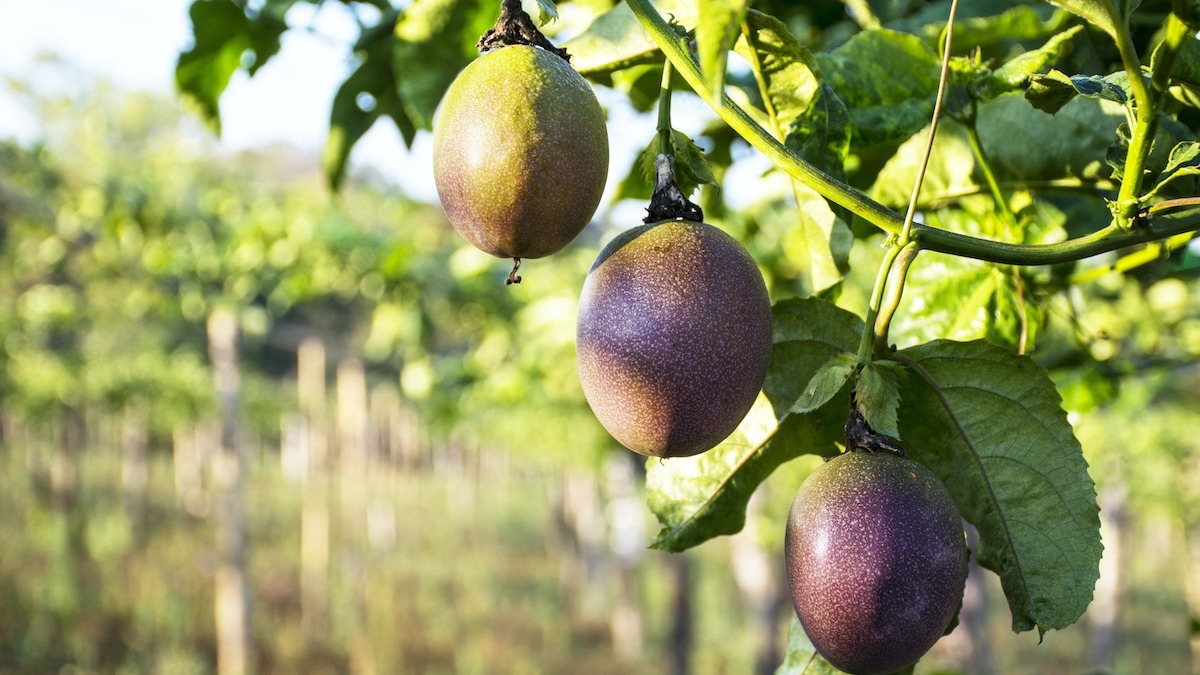




Leave A Comment